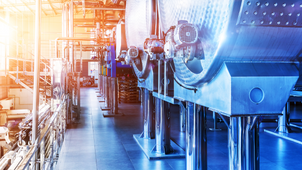
Optimisation of energy use and innovation in supply and demand would help to maximise yield and increase profitability in the agricultural sector.
Further business opportunities along the value chain could be unlocked through a proactive approach to waste management, transport logistics and demand side response.

SECTORS - AGRICULTURE
Report: Diesel use in NSW agriculture and opportunities to support net zero emissions
A report commissioned by A2EP for the NSW Department of Primary Industries has found that while diesel use makes up a relatively small proportion of agricutural emissions in the state, improving the energy productivity of diesel-fuelled equipment and switching to lower carbon alternatives will make an important contribution to emission reductions in the sector while also providing benefits to farmers.
In addition to detailing the current extent of diesel use in NSW agriculture, the report also sets out the most promising pathways for optimising and replacing on-farm diesel use, particularly partial or full electrification of stationary equipment and the powering of mobile machinery with biodiesel or renewable diesel while capacity and confidence is increased for non-combustion future alternatives.
Report: Distributed energy resources for primary industries
A report commissioned by A2EP for the NSW Department of Primary Industries (NSW DPI) has identified extensive opportunities for the uptake of distributed energy resources (DER) by primary producers – along with a number of barriers which need to be overcome to take advantage of the opportunities.
Despite growing enthusiasm for renewable energy generation across the agricultural sector as a way to reduce energy costs, generate additional income and decarbonise operations, uptake of DER has been limited with projects facing a number of roadblocks.
This report, researched and written by Energetics, was commissioned in response to the obstacles identified through this study. It identifies and assesses the distributed energy resource (DER) options available to primary producers, the benefits, costs and challenges, as well as the support and reforms that will be needed to unlock the potential of DER in the farming sector.
Four DER scenarios are investigated for technical and commercial feasibility:
-
virtual net-metering
-
exploring secondary income streams
-
grid-connected microgrids, and
-
virtual peer-to-peer energy trading.
Improving energy productivity in agriculture
We are seeking to lift the overall economic productivity of agriculture and the agricultural value chain through a focus on energy. Our aspiration is to improve energy productivity and accelerate decarbonisation across the Australian economy. To achieve these goals it is important to understand the farming systems within the industry and to accept that there is no ‘one-size-fits-all’ strategy that could be implemented generically across firms and farms.
Collaborating with industry experts, we have developed a roadmap identifying the obstacles and opportunities for improving energy productivity of the agricultural sector.
In 2019, A2EP conducted a scoping study for the NSW Department of Primary Industries exploring the potential for primary industries to improve energy productivity. The study can be viewed below.
-
Agriculture Energy Investment Plan (PDF) - Agriculture Victoria
-
Energy case studies - Queensland Farmers Federation
-
Energy case studies - AgInnovators
-
Energy savings at Skinner Partnership dairy, Dubbo, NSW - AgInnovtors
-
Piggery producing electricity from biogas digester, Kojonup, WA - ABC Rural
-
Solar powered tomato farm, Port Augusta, SA - Sundrop Farms
-
Murray Goulburn Cooperative advanced separation technologies - CSIRO
-
Thomas Foods International heat recovery from refrigeration (PDF) - Australian Meat Processor Corporation



















